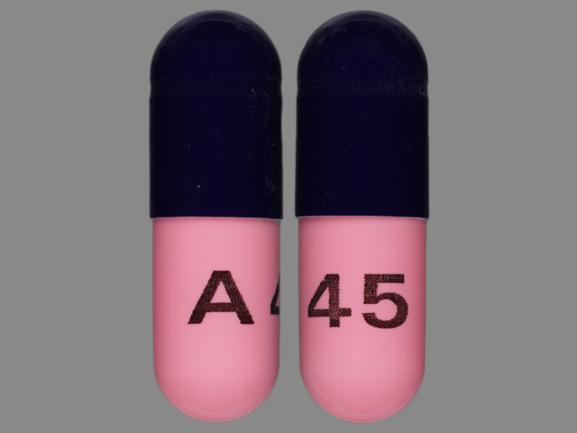Amoxicillin: 7 things you should know
Medically reviewed by Carmen Fookes, BPharm. Last updated on Dec 28, 2022.
1. How it works
- Amoxicillin is an antibiotic that kills bacteria by inhibiting the synthesis of cell wall mucopeptides (crystal lattice-like structures composed of amino acids that make up the cell wall). This weakens and destroys the bacterial cell wall.
- Amoxicillin has a similar action to ampicillin.
- Amoxicillin belongs to the group of medicines known as penicillins.
2. Upsides
- Active against bacteria that commonly cause ear, nose, or throat infections.
- May also be used to treat infections of the genitourinary tract, skin, or lower respiratory tract caused by susceptible bacteria.
- Specifically active against:
- Aerobic gram-positive bacteria: Enterococcus faecalis, Staphylococcus species (beta-lactamase negative strains only), certain strains of Streptococcus species including S. pneumoniae
- Aerobic gram-negative bacteria (beta-lactamase negative strains only): Escherichia coli, Haemophilus influenzae, Neisseria gonorrhoeae, Proteus mirabilis.
- Also has activity against Helicobacter pylori, a bacteria often associated with stomach ulcers. Amoxicillin, when used in combination with other medicines (such as lansoprazole and clarithromycin), can help reduce the risk of duodenal ulcer recurrence.
- Usually well-tolerated.
- Generic amoxicillin is available.
3. Downsides
If you are between the ages of 18 and 60, take no other medication or have no other medical conditions, side effects you are more likely to experience include:
- Nausea, diarrhea, abdominal pain, headache, taste perversion, and skin rash are the most common side effects (occurring in less than 10% of people who take amoxicillin).
- May cause an allergic reaction in those allergic to penicillin. The overall incidence of anaphylaxis is rare (less than 0.01%).
- Not active against beta-lactamase-producing strains of bacteria.
- Staphylococci bacteria that are resistant to methicillin/oxacillin should be considered resistant to amoxicillin as well.
- Severe diarrhea associated with Clostridium difficile is a potential side effect of almost all antibacterial agents, including amoxicillin.
- The risk of rash is high in people with mononucleosis administered ampicillin-like antibiotics such as amoxicillin, and amoxicillin should be avoided in these people.
- May cause false-positive results for glucose in some urine tests.
- Avoid in people with a history of penicillin allergy.
Note: In general, seniors or children, people with certain medical conditions (such as liver or kidney problems, heart disease, diabetes, seizures) or people who take other medications are more at risk of developing a wider range of side effects. View complete list of side effects
4. Bottom Line
Amoxicillin is a penicillin-type antibiotic that may be used to treat infections caused by susceptible bacteria. It is usually well tolerated.
5. Tips
- Take exactly as directed. Amoxicillin is usually administered every eight to twelve hours, depending on the infection being treated. Complete the course of amoxicillin as prescribed by your doctor.
- May be taken with or without food.
- Available as chewable tablets and an oral suspension if you have difficulty swallowing capsules.
- Dial 911 if you experience any trouble breathing, swelling, or tightness of the throat.
- See your doctor if you develop prolonged or significant diarrhea or a rash.
- If you are taking amoxicillin long-term your doctor may need to periodically order blood tests and check your kidney and liver function.
- If you are taking amoxicillin for gonorrhea, you may need a follow-up test for STDs (such as syphilis) after three months.
6. Response and effectiveness
- Amoxicillin is rapidly absorbed after oral administration and peak levels are reached 1-2 hours after dosing. However, it may take up to 24-72 hours of regular dosing before infection symptoms start to abate.
- Amoxicillin is effectively distributed throughout most body tissues and fluids. The exception is the brain and spinal cord, where it only penetrates if the meninges (the membranes that enclose the brain and spinal cord) are inflamed.
7. Interactions
Medicines that interact with amoxicillin may either decrease its effect, affect how long it works, increase side effects, or have less of an effect when taken with amoxicillin. An interaction between two medications does not always mean that you must stop taking one of the medications; however, sometimes it does. Speak to your doctor about how drug interactions should be managed.
Common medications that may interact with amoxicillin include:
- allopurinol (may increase the incidence of rash)
- anticoagulants (blood thinners), such as warfarin (may prolong bleeding time)
- oral contraceptives (may decrease absorption leading to reduced efficacy)
- other antibiotics, such as chloramphenicol, sulfonamides, macrolides, and tetracycline
- probenecid (may increase blood concentrations of amoxicillin).
Amoxicillin may cause a false-positive reaction for glucose in the urine with copper reduction tests (eg, Benedict's or Fehling's solution), but not with enzyme-based tests.
Note that this list is not all-inclusive and includes only common medications that may interact with amoxicillin. You should refer to the prescribing information for amoxicillin for a complete list of interactions.
More about amoxicillin
- Check interactions
- Compare alternatives
- Pricing & coupons
- Reviews (365)
- Drug images
- Side effects
- Dosage information
- During pregnancy
- Support group
- Drug class: aminopenicillins
- Breastfeeding
- En español
Patient resources
- Amoxicillin drug information
- Amoxicillin Capsules and Tablets
- Amoxicillin Chewable Tablets
- Amoxicillin Extended-Release Tablets
- Amoxicillin Suspension
Other brands
Amoxil, Trimox, Moxatag, Amoxicot, ... +2 more
Professional resources
- Amoxicillin monograph
- Amoxicillin (FDA)
- Amoxicillin Capsules (FDA)
- Amoxicillin Chewable (FDA)
- Amoxicillin Extended Release Tablets (FDA)
Other brands
Related treatment guides
References
- Amoxicillin. Updated 11/2022. Chartwell Governmental & Specialty RX, LLC https://www.drugs.com/pro/amoxicillin.html
Further information
Remember, keep this and all other medicines out of the reach of children, never share your medicines with others, and use amoxicillin only for the indication prescribed.
Always consult your healthcare provider to ensure the information displayed on this page applies to your personal circumstances.
Copyright 1996-2024 Drugs.com. Revision date: December 28, 2022.

